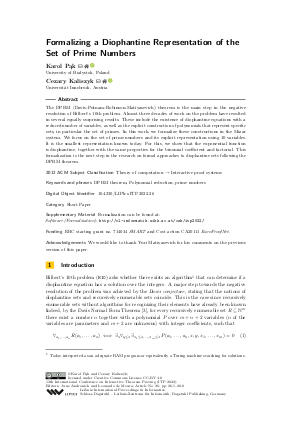LIPIcs.ITP.2022.26.pdf
- Filesize: 0.71 MB
- 8 pages

 Creative Commons Attribution 4.0 International license
Creative Commons Attribution 4.0 International license








Feedback for Dagstuhl Publishing